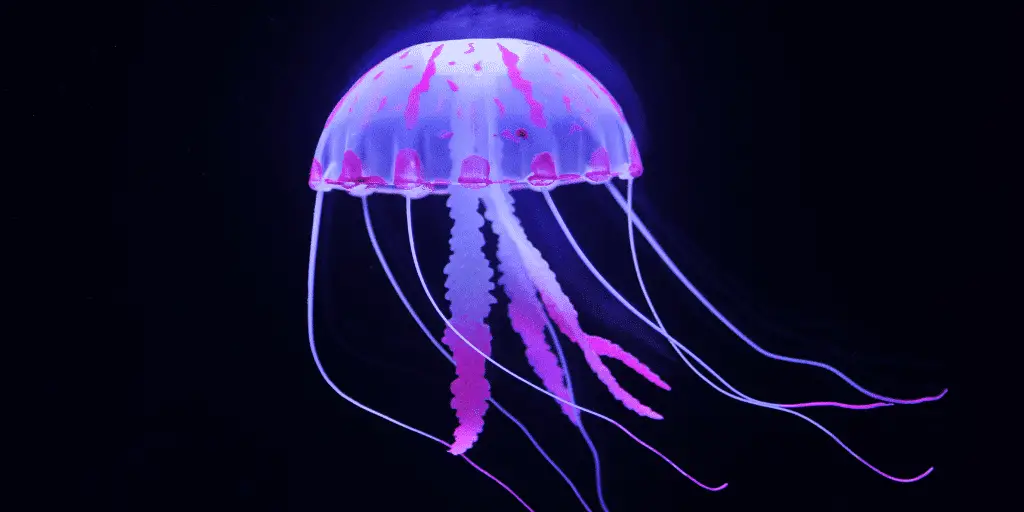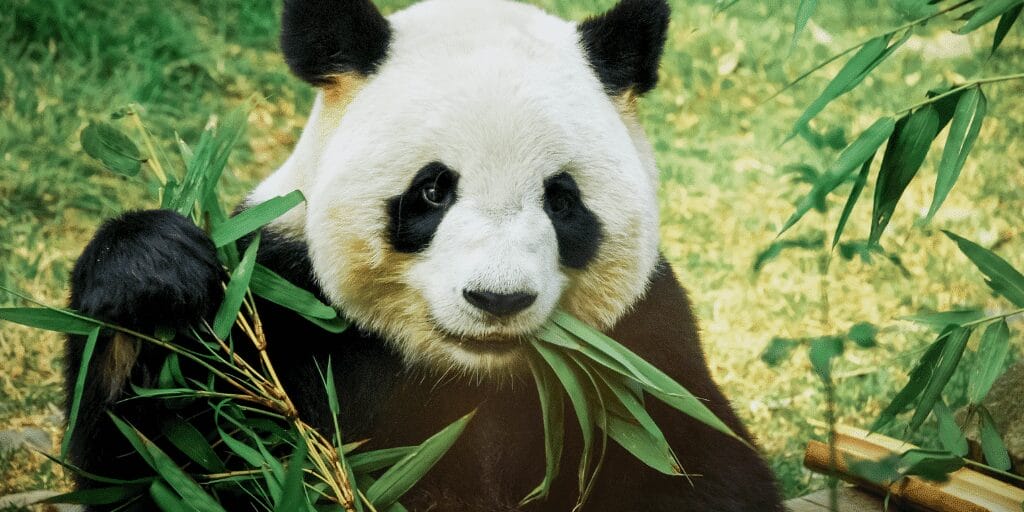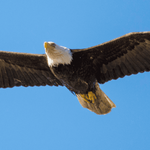Curious about the brainpower of our animal counterparts? Uncover the mystery of which creatures may possess the lowest IQs and why this question is far from simple.
Delve into the intricacies of animal intelligence, where instinct and survival intertwine, and discover the surprising truths behind nature’s design.
Key Takeaways:
- Intelligence Quotient (IQ) is a human-centric measure, making it challenging to apply to animals; however, researchers use behavioral observations, problem-solving tasks, and adaptability to assess animal cognitive abilities, acknowledging that these must be tailored to each species’ unique lifestyle and sensory capabilities.
- Common misconceptions about animal intelligence can arise from anthropomorphism or misinterpreting instinct-driven behaviors as a lack of intelligence, whereas these behaviors may be sophisticated adaptations to an animal’s environment.
- Certain invertebrates like jellyfish and sea sponges are often cited as having minimal cognitive functions due to their simple nervous systems or lack thereof, while some birds, such as turkeys and ostriches, exhibit instinctual behaviors that suggest different cognitive abilities compared to more problem-solving oriented avian species.
- Mammals like pandas, sloths, and koalas, which display simple behavioral patterns, have evolved intelligence that is perfectly suited to their specific ecological niches, with their seemingly simple behaviors being the result of evolutionary adaptations rather than a sign of low intelligence.
- The study of animal intelligence must consider the ethical implications of labeling animals as “dumb” and recognize that intelligence is relative and species-specific, shaped by evolutionary pressures rather than a hierarchy comparable to human IQ.
What Animal Has the Lowest IQ?
Jellyfish and sea sponges are often cited as having the lowest IQ due to their simple nervous systems and lack of brains.
Identifying the Animals with the Lowest IQ

When we embark on the quest to understand which animals might have the lowest IQ, we encounter a complex challenge. Intelligence Quotient, or IQ, is a concept originally tailored to human cognitive abilities, making its application to animals a tricky endeavor.
To navigate this, researchers employ a variety of methodologies, each designed to measure different facets of intelligence across species.
Behavioral observation stands as a cornerstone in this field. By watching how animals interact with their environment, scientists can glean insights into their problem-solving skills and adaptability.
Cognitive tests, often involving puzzles or mazes, are also instrumental in gauging an animal’s mental capabilities. However, comparing the intelligence of a bird to that of a fish, for example, is fraught with difficulties due to their vastly different lifestyles and natural abilities.
Criteria for Assessing Animal Intelligence
The criteria for assessing animal intelligence are as diverse as the animal kingdom itself. Scientists look at several benchmarks to evaluate cognitive prowess:
- Problem-solving abilities: This involves observing how an animal navigates challenges, such as finding food in a new or complex environment.
- Memory tests: These assess an animal’s ability to remember locations, individuals, or techniques that they have encountered before.
- Adaptability: The capacity of an animal to adjust to changes in its environment is a key indicator of intelligence.
Standardized tests are the gold standard in human IQ assessments, but creating equivalent tests for animals is a monumental task. The diversity of sensory abilities and behavioral patterns across species means that what works for one may not work for another.
Despite these challenges, researchers strive to develop fair and reliable ways to measure animal intelligence, always with the goal of understanding more about the creatures with whom we share our planet.
Common Misconceptions About Animal IQ
When discussing animal intelligence, it’s crucial to clear the air of common misconceptions. For instance, certain behaviors that might seem to indicate a lack of intelligence could, in fact, be sophisticated survival mechanisms. An animal that repeats a seemingly pointless action could be practicing a skill vital to its survival.
Anthropomorphism, the attribution of human characteristics to non-human entities, often leads to biased assessments of animal IQ. Just because an animal’s behavior doesn’t align with human expectations doesn’t mean it lacks intelligence.
It’s important to remember that each species has evolved to thrive in its own unique niche, and their cognitive abilities reflect the demands of their environment.
In the quest to identify which animals might have the lowest IQ, we must tread carefully, ensuring that our measures of intelligence are not unfairly biased by our human perspective. It’s a fascinating journey into the minds of our fellow earthlings, one that requires patience, understanding, and a willingness to look beyond our preconceived notions of what it means to be smart.
Examples of Animals with Perceived Low Intelligence and Reasons
| Animal Group | Examples | Reason for Perception |
| Invertebrates | Jellyfish, Sea Sponges | Minimal cognitive functions due to simple nervous systems or lack thereof. |
| Birds | Turkeys, Ostriches | Reliance on instinctual behaviors and small brain size in comparison to body. |
| Mammals | Pandas, Sloths, Koalas | Simple daily routines and behaviors perceived as lack of intelligence. |
| Reptiles and Amphibians | Komodo Dragons, Cane Toads | Limited learning capabilities and basic instinctual responses perceived as low IQ. |
Top Examples of Animals with Low Intelligence
When we talk about animals with low intelligence, it’s important to understand that we’re discussing this within the context of human-defined cognitive abilities. Scientific research has pointed to several animals that exhibit traits or behaviors which suggest a lower level of intelligence compared to other species. Let’s dive into some of these examples and explore the reasons behind their ranking.
Invertebrates with Minimal Cognitive Functions

Invertebrates like jellyfish and sea sponges are often cited as having minimal cognitive functions. This is largely due to their simple nervous systems. Jellyfish, for instance, have nerve nets rather than a centralized brain, which limits their ability to process complex information.
Sea sponges don’t even have a nervous system; they are sessile creatures that filter feed and have no need for the complex behaviors seen in more mobile animals. These characteristics are associated with lower intelligence because they result in a limited behavioral repertoire.
- Jellyfish are known for their basic responses to stimuli rather than complex thought processes.
- Sea sponges lack any form of decision-making capabilities and operate purely on a cellular level.
Birds with Instinct-Driven Behaviors
Certain birds, such as turkeys and ostriches, are often perceived as having lower intelligence due to their heavy reliance on instinctual behaviors.
Unlike some of their avian cousins known for problem-solving skills, these birds tend to follow set patterns that are hardwired into their brains. This isn’t to say they are unintelligent, but their cognitive abilities are different from those of birds like crows or parrots, which exhibit more learned behaviors.
- Turkeys often exhibit behaviors that seem nonsensical to humans, such as feeding on inedible objects, which can be attributed to their instinctual foraging habits.
- Ostriches, despite their large size and speed, have relatively small brains, which limits their problem-solving capabilities and learning capacity.
The brain structure of these birds is such that the regions responsible for instinctual behavior are more developed than those associated with learning and memory. This structural difference influences their cognitive abilities and places them lower on the scale of animal intelligence as defined by human standards.
Mammals with Simple Behavioral Patterns

Looking at mammals, creatures like pandas, sloths, and koalas are often thought to have low intelligence because of their simple daily routines. However, it’s essential to consider the evolutionary reasons behind their behaviors.
- Pandas spend most of their time eating bamboo, a food that is nutritionally poor, which necessitates a low-energy lifestyle and doesn’t require complex behaviors.
- Sloths are known for their slow movements and energy-conserving lifestyle, which is often mistaken for a lack of intelligence. In reality, their behavior is a successful adaptation to their arboreal habitat.
- Koalas have a diet that is almost exclusively eucalyptus leaves, which are toxic to most animals. Their specialized diet means they don’t need a wide range of behaviors to survive.
These mammals have evolved in such a way that their intelligence is perfectly suited to their environment and survival needs. While their behaviors may seem simple, they are the result of millions of years of evolution fine-tuning their species to thrive in their specific niches.
In each of these cases, what might be perceived as low intelligence is often a matter of an animal’s lifestyle and evolutionary adaptations being misunderstood. It’s a reminder that intelligence in the animal kingdom is a complex and varied trait, and what may seem like a lack of intelligence in one context can be a perfectly adapted survival strategy in another.
Exploring Intelligence in Reptiles and Amphibians
Reptiles and amphibians are fascinating creatures that have survived through the ages, adapting to a myriad of environments. Their cognitive abilities, while different from mammals and birds, are perfectly suited to their ecological niches.
In this exploration, we’ll dive into the intelligence of species like Komodo dragons and cane toads to understand the limitations and functionalities of their intelligence.
Reptiles with Limited Learning Capabilities
Komodo dragons are a prime example of reptiles with limited learning capabilities. These large lizards are known for their sharp hunting instincts and have been observed to engage in some problem-solving behaviors, but their intelligence is largely geared towards their survival in the wild.
The environment of the Komodo dragon, which includes islands in Indonesia, provides everything they need to thrive with minimal need for advanced cognitive skills. Their intelligence manifests in the following ways:
- Hunting strategies: Komodo dragons use stealth and power to ambush their prey, a tactic that doesn’t require complex thought but rather an instinctual understanding of their environment.
- Territorial behavior: They exhibit strong territorial instincts, which are more about innate responses than learned behaviors.
The lifestyle of Komodo dragons, which involves long periods of rest and sudden bursts of energy for hunting, doesn’t necessitate a high level of intelligence as we define it. Instead, their cognitive abilities are honed for efficiency and survival.
Amphibians with Basic Instinctual Responses
Amphibians like cane toads display basic instinctual responses that are often mistaken for a lack of intelligence. However, these responses are critical for their survival in diverse and sometimes challenging environments.
Cane toads, in particular, have a remarkable ability to adapt to various habitats, which is a testament to their resilience rather than a sign of low intelligence. Their cognitive functions are characterized by:
- Predatory behavior: Cane toads capture their prey using a simple yet effective sit-and-wait strategy, relying on their ability to remain still and undetected.
- Reproductive instincts: They have strong breeding instincts, which drive them to find and populate new habitats rapidly.
The amphibious lifestyle of cane toads, which includes both aquatic and terrestrial environments, shapes their intelligence in a way that ensures their survival and proliferation.
They may not showcase the complex learning abilities of other animals, but their instinctual responses are finely tuned to their life cycle and ecological demands.
In both reptiles and amphibians, intelligence is less about the ability to learn new tricks or solve puzzles and more about the instinctual behaviors that have been refined over millions of years.
These creatures may not have the highest IQs when measured by human standards, but their cognitive abilities are exactly what they need to be successful in their respective niches.
The Role of Evolution in Animal Intelligence

Evolutionary pressures have been the architects of intelligence across the animal kingdom. As species navigate the challenges of their environments, intelligence often develops as a means to survive and thrive.
However, it’s important to recognize that high intelligence is not the pinnacle of evolution. In many cases, what might be perceived as low intelligence is actually an efficient adaptation to specific environmental challenges.
Evolutionary Pressures and Cognitive Development
The development of cognitive abilities in animals is a direct response to evolutionary pressures. For instance:
- Prey animals have evolved heightened sensory perception to detect predators, which may not require advanced problem-solving skills.
- Species with few natural predators, such as the sloth, have not needed to develop complex cognitive abilities, as their survival strategies rely more on camouflage and less on active defense mechanisms.
These examples illustrate that intelligence, as we define it, is not always the most advantageous trait for survival. Evolutionary adaptation can lead to a wide range of cognitive capabilities, each perfectly suited to the species’ way of life.
Adaptations That May Affect Perceived Intelligence
Physical and behavioral adaptations can sometimes create misconceptions about an animal’s intelligence. For example:
- The thick fur of a koala serves as insulation and reduces the need for shelter-building intelligence.
- The migration patterns of monarch butterflies, which are inherited rather than learned, might be mistaken for a lack of learning ability when they are actually a remarkable navigational feat.
These adaptations are crucial for the animals’ survival and reproductive success. They are evidence of the diverse ways in which life on Earth has evolved, reminding us that intelligence is not a one-dimensional trait but a spectrum of abilities tailored to the needs of each species.
Behavioral and Environmental Factors
The intelligence of animals is not solely determined by their genetics; it’s also shaped by behavioral patterns and environmental influences.
The complexity of an animal’s habitat, along with its social structures, can have profound effects on cognitive development. These factors can either limit or enhance the mental capabilities required for survival.
How Behavior Influences Perceptions of Intelligence
Certain behaviors can significantly influence our perceptions of an animal’s intelligence. For instance:
- Repetitive actions may be seen as a lack of intelligence, but they can be crucial for an animal’s survival, such as the migration patterns of birds or the nest-building of rodents.
- A lack of curiosity is often interpreted as low intelligence, yet for some species, sticking to known behaviors can be a safer strategy than exploring unknown territories.
It’s important to distinguish between innate behaviors, which are hardwired into an animal’s genetic code, and learned behaviors, which are acquired through experience.
Innate behaviors, such as a turtle’s instinct to head toward the ocean immediately after hatching, are not necessarily indicators of intelligence levels. Learned behaviors, like a chimpanzee using tools to obtain food, are more directly linked to cognitive abilities.
The Impact of Environment on Animal Cognition
The environment in which an animal lives can greatly affect its cognitive abilities. Animals in diverse habitats may develop more complex cognitive skills to navigate and exploit their surroundings. Here’s how different environments can impact animal intelligence:
- Urban environments present unique challenges that can lead to the development of novel problem-solving skills, such as crows dropping nuts on streets for cars to crack open.
- Natural settings with a high degree of complexity, like a rainforest, can foster advanced spatial awareness and memory in species that inhabit them.
Studies have shown that animals adapt their intelligence to their surroundings. For example, squirrels in urban areas have been observed exhibiting more complex behaviors to overcome human-made obstacles than their rural counterparts.
In conclusion, when considering what animal has the lowest IQ, it’s crucial to take into account the behavioral and environmental factors that influence cognitive development.
An animal’s intelligence is not a fixed trait but a dynamic one, shaped by the challenges and opportunities presented by its environment and social interactions.
The Controversy of Ranking Animal Intelligence
Ranking animal intelligence is a topic that stirs up considerable debate among scientists and animal lovers alike. The practice of labeling certain animals as having low intelligence is not only contentious but also fraught with ethical considerations.
It’s crucial to approach the study of animal cognition with respect and an understanding that intelligence is not a simple hierarchy but a complex web of abilities that are tailored to the needs of each species.
Ethical Implications of Labeling Animals as “Dumb”
The act of labeling animals based on perceived intelligence carries significant ethical implications. Such labels can influence conservation efforts and public perception in ways that are not always positive. Here’s why recognizing the value of all species, regardless of cognitive abilities, is important:
- Conservation Efforts: Animals deemed less intelligent may receive less attention and resources for conservation, which can be detrimental to biodiversity.
- Public Perception: Negative labels can lead to a lack of empathy and respect for certain species, which impacts how society treats these animals.
It’s vital to remember that every species plays a unique role in its ecosystem, and cognitive abilities are just one aspect of an animal’s overall ecological importance.
The Relativity of Intelligence Across Different Species
Intelligence in animals should be viewed as relative, not absolute. Different species have evolved intelligence that is perfectly suited to their specific needs and environments. Here are a few reasons why comparisons across species can be misleading:
- Species-Specific Intelligence: Animals have developed cognitive abilities that help them survive and thrive in their particular habitats, whether that’s the deep sea, the forest canopy, or the urban jungle.
- Evolutionary Needs: The intelligence of each species is shaped by evolutionary pressures, not by a desire to match human cognitive abilities.
For example, the complex social structures of dolphins necessitate sophisticated communication and problem-solving skills, while the solitary nature of many reptiles does not. To compare these different forms of intelligence is to overlook the unique adaptations that have made each species successful in its own right.
In discussing animal intelligence, it’s essential to maintain a respectful approach that acknowledges the diverse and remarkable ways in which animals interact with their world. By moving away from rankings and labels, we can foster a greater appreciation for the myriad forms of intelligence that exist in the animal kingdom.
Additional Considerations in Animal Intelligence Research

Researching animal intelligence is a field that is as complex as it is fascinating. The methodologies currently in use are just the beginning, and there’s a vast potential for future discoveries that could reshape our understanding of animal minds.
An interdisciplinary approach, combining insights from biology, psychology, and technology, is essential for advancing this field.
The Complexity of Measuring Animal IQ
Measuring animal IQ presents a unique set of challenges and complexities. The main issues include:
- The need for species-specific tests that account for the unique abilities and natural behaviors of different animals.
- The limitations of human-centric measures, which can fail to capture the full range of animal cognitive abilities.
To truly gauge animal intelligence, researchers must employ diverse and innovative research methods. These methods should be designed to recognize and measure a wide variety of cognitive skills, such as memory, problem-solving, communication, and social learning, in ways that are meaningful and relevant to each species.
Future Directions in Animal Cognition Studies
Looking ahead, animal cognition studies are poised to benefit greatly from technological advancements. The potential applications of artificial intelligence and machine learning are particularly exciting. These technologies could offer new ways to analyze complex animal behaviors and cognitive processes. The implications for conservation and animal welfare are significant:
- Advanced data analysis could lead to better understanding of animal needs and how to protect endangered species.
- Machine learning algorithms might one day predict animal behaviors, aiding in the creation of more effective conservation strategies.
As we continue to develop and refine these tools, the possibilities for breakthroughs in our understanding of animal intelligence are boundless. With each new discovery, we not only learn more about the animals we share our planet with but also gain insights into the workings of cognition itself.
- What Should I Do If A Koala Bites Me? Safety Guide - 2024-05-30
- Are Kangaroos Born Without Hind Legs? A Fascinating Journey - 2024-05-30
- Animals That Look Like Squirrels - 2024-05-30









